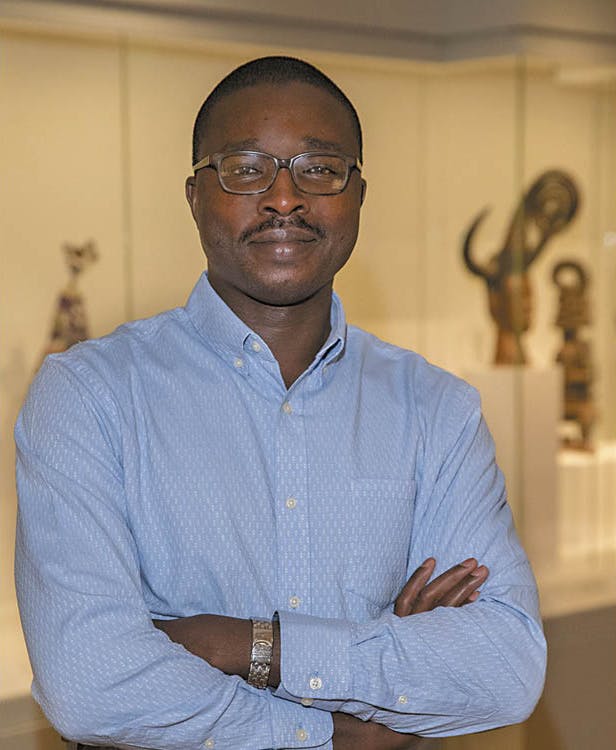Ugochukwu-Smooth C. Nzewi
- Magazine Article
- Staff
Meet the new curator of African art

Last August, the museum welcomed Ugochukwu-Smooth C. Nzewi as curator of African art. Smooth Nzewi, as he prefers to be called, comes most recently from Dartmouth College’s Hood Museum of Art, where he also held the position of curator of African art. He has taught at the Institute of African Studies, University of Bayreuth, Germany; Dartmouth College; and Emory University. A prolific writer, he has contributed essays and chapters to a range of publications. He was a fellow at the Smithsonian National Museum of African Art and a practicing artist and independent curator based in Nigeria. Last fall, Circles program manager Terri Mazzola Gertz met up with Nzewi for an interview.
Do you have a favorite piece in the CMA collection?
It is a tough call, as I am drawn to all the works in the African collection. But if I am to single out any particular one, it is between the Bamana Chiwara female antelope headdress [included in ArtLens] and a Chokwe female mask. The Chiwara headdress is breathtaking despite its small size. Its quiet elegance tickles and fills me with wonder. The Chokwe mask is a true embodiment of idealized female beauty. It is not on view now, but it will be in an exhibition that I am working on. The two works attest to the technical dexterity of their makers in conveying important social ideas of the Bamana and the Chokwe peoples.
Have you found a favorite restaurant in Cleveland?
I have visited a few on the West and East Sides. At Toast on West 65th Street, the food was fantastic on the two occasions that I was there. I had an enjoyable evening with friends at Felice on Larchmere, too. I plan to visit others and to indulge myself in what Cleveland has to offer.
Where is your favorite place to travel?
In general, I love big cities because of the energy and the crowds that allow one to be anonymous and visible at the same time. I have been going to Bayreuth in northern Bavaria, Germany, every summer since 2015, and I have gradually taken to this small, quaint, and
delectable town. It is really pretty with its 19th-century architecture, cobblestone paths, and waterway. Every summer it hosts the world-renowned Bayreuth Festival; it is quite a catchy affair that draws people from all over the world to Bayreuth. The town also holds an annual literary festival. The University of Bayreuth is the epicenter of African studies in Europe, so that is perhaps why I am drawn to the town, in addition to its enigmatic beauty.
Tell us about your current projects.
I am planning a rotation for the African gallery, an opportunity to introduce some never-before-seen works from the collection. The objects are quite something, so I am really excited about how they will make a splash when on view. I am also working on two exhibitions. To give a sneak peek, one of them will be in the focus gallery and the other in one of the larger exhibition galleries. While one will draw attention to contemporary African art and its historical antecedent in a measured way, the other will address an important period in postcolonial Africa. Both exhibitions, I hope, will be groundbreaking.
What do you most look forward to in your position?
I am really looking forward to being a part of the community and to contributing my own bit to the actualization of the museum’s new strategic plan. It is a great time to be at the CMA and to be part of exciting
initiatives.
Cleveland Art, March/April 2018